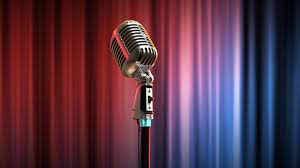How to Write Original Standup Comedy
This article is brought to you by the Stand Up Comedy Generator.
If you're new to standup comedy and are unsure of how to start writing your own standup bits, then this article will be your guide. In this article, I'll discuss the three key ingredients of a good comedy bit: observational humor, breaking assumption, and pulling back and revealing. By following these tips, you'll be able to create your own standup comedy bits in no time.
Observational humor
Observational standup comedy focuses on the observations of the everyday life of a particular person, place, or thing. This style differs from other styles of comedy in that the performer portrays themselves as an observer rather than taking part in the subject. The comedian is more interested in the observations of a specific person or situation and tying them together to form a coherent routine. It is important to note that observational standup comedy requires a different kind of humor than other types.
Observational standup comedy is one of the most challenging forms of comedy. The comic must be able to use his imagination and look at everyday events and situations in an uncanny way to make the audience laugh. While most people are not as creative, those who are capable of being imaginative can make jokes about even the most mundane experiences. Using details in the comics can make them more engaging for the audience.
Observational standup comedy focuses on observing everyday events and situations that are not necessarily funny. Observational standup comedians often draw inspiration from their own lives and observations to make their comedy more authentic. People enjoy watching a comedian's videos, and it can lead to endless Youtube marathons. A typical comedy video will feature a funny moment or an interesting observation. It is also possible to create a hilarious comedy video on the computer and upload it to a website.
Observational standup comedy has a long and illustrious history. It first gained popularity during the 1950s. Some critics have compared observational comedy to modernism, which means that it is free of the traditional vaudeville format. Shelley Berman was one of the earliest adopters of observational standup comedy. He has performed in all fifty states, including Canada.
Breaking assumption
The most effective way to break an assumption in a joke is to use a setup. A setup involves doing something private, which you break in a punchline. A perfect example of a setup is when you mention your grandfather dying while driving a car. The audience would expect a peaceful death, but instead they get the shock of seeing your grandfather die in his car. The same holds true of the opposite assumption.
Pulling-back and reveal
Standup comedians often flow from one story to the next, with no unified "point" to their routine. This is a unique feature of the hour-long standup routine compared to other forms of long-form composition. The use of misdirection before a reveal can help comedians subvert audience expectations and divert attention away from the joke structure. The following are examples of standup comedians who use misdirection before a reveal.
Relatability
If you're looking to develop your writing skills, you should be mindful of realism. A key principle of standup comedy is honesty. By exploring topics you're familiar with, you can turn these into springboards for discussing difficult topics. For example, in a comic titled Feelings, you'll discuss the consequences of having sex unprotected. This subject matter is highly relatable for a conservative religious tradition.
Flow
There are several key steps that comedians should follow when writing original standup comedy. They should have enough material to last an hour. Organize the material in a logical order that allows for enough room for audience laughter, and make sure to have a backup joke ready at all times. Flow when writing original standup comedy requires that the comedian treat their material as a single act, and write transitions between each joke and the opening and closing of the act.
Learning how to write a comedy act is just the beginning. Many writers spend countless hours experimenting with different ideas until they hit a block. This can lead to writer's block, which can hinder the flow of the creative process. Fortunately, there are several ways to break out of writer's block and find your creative flow. Here are five methods that you can use to get started:
What are your thoughts on How to Write Original Standup Comedy?
Share your thoughts in the comments below: